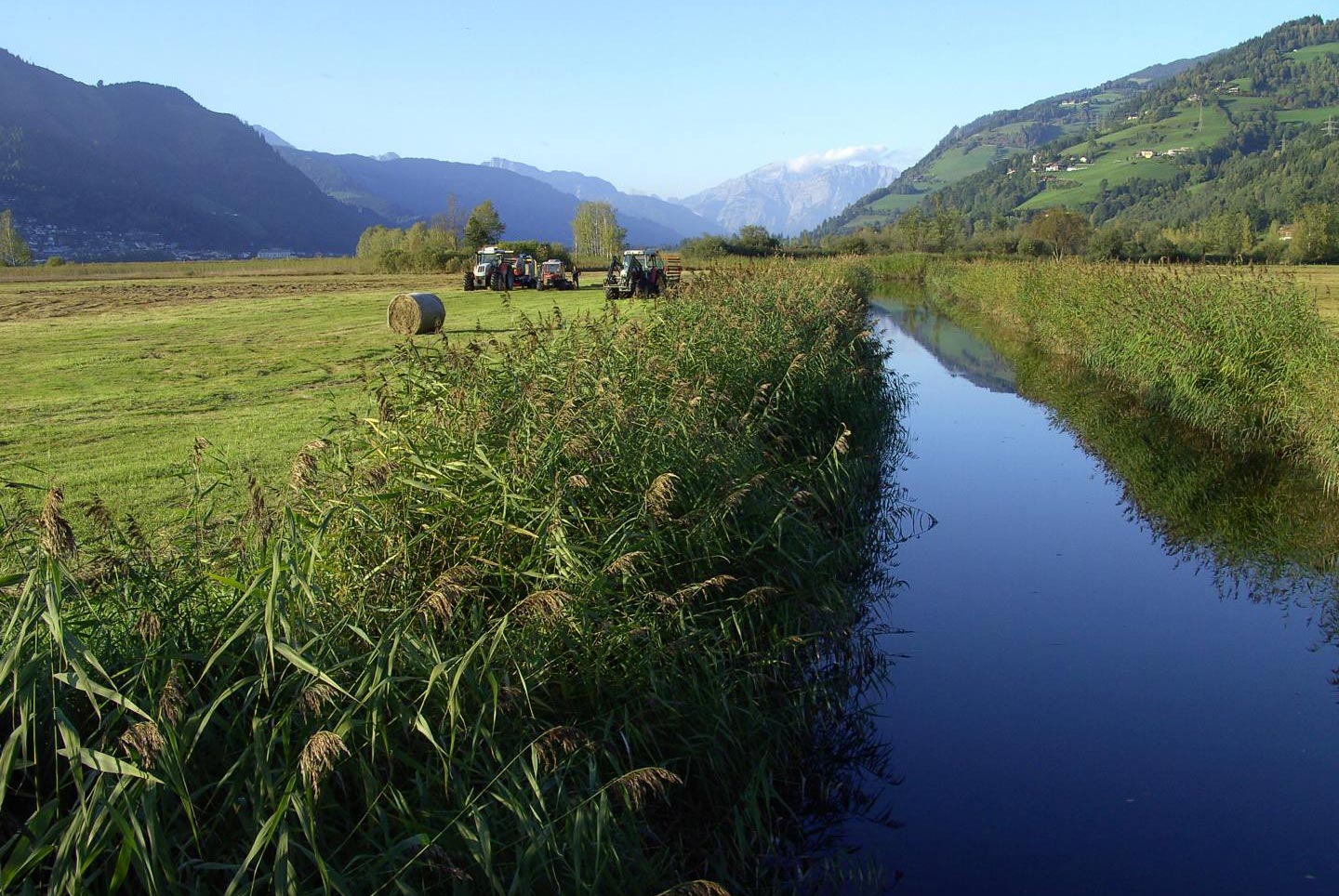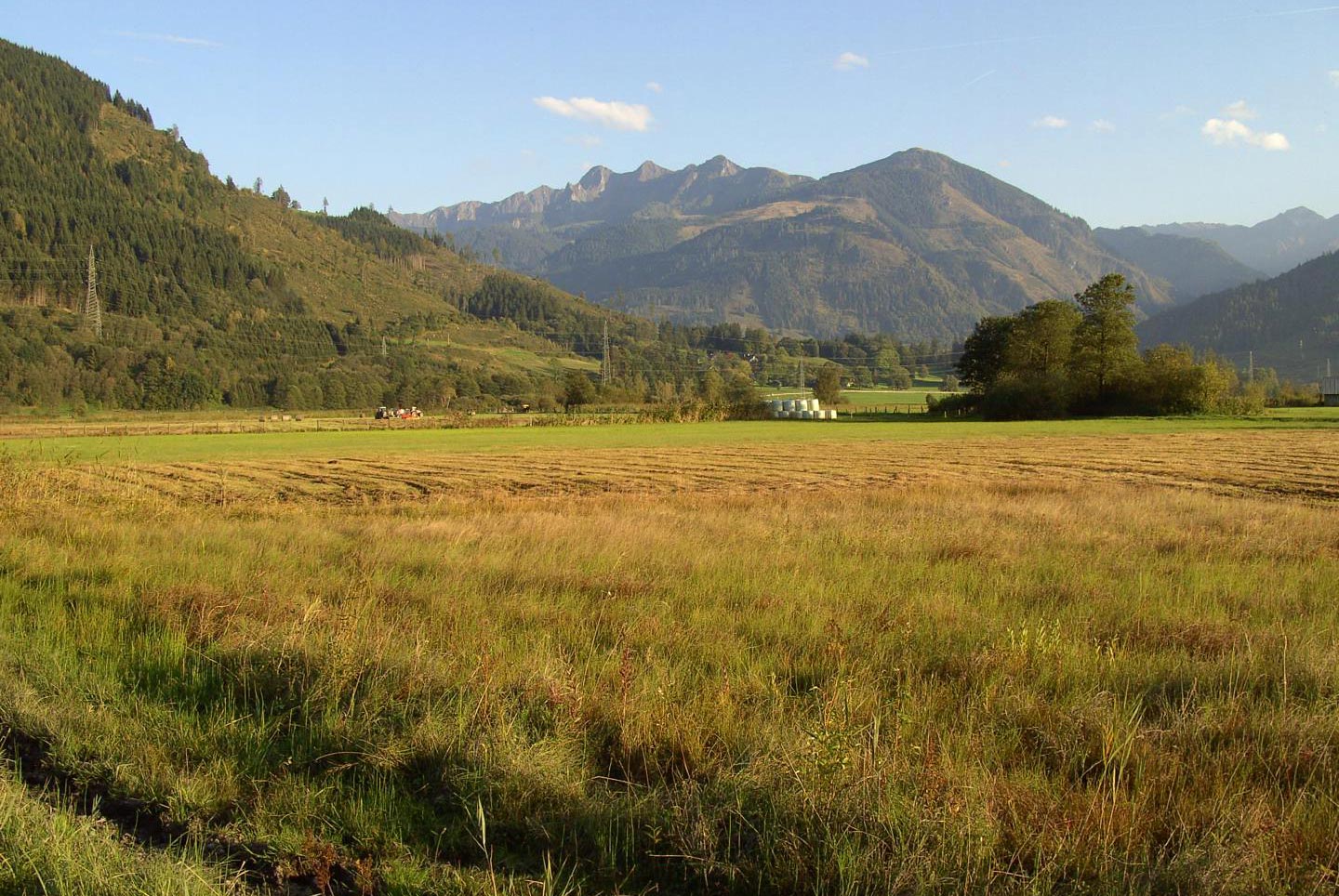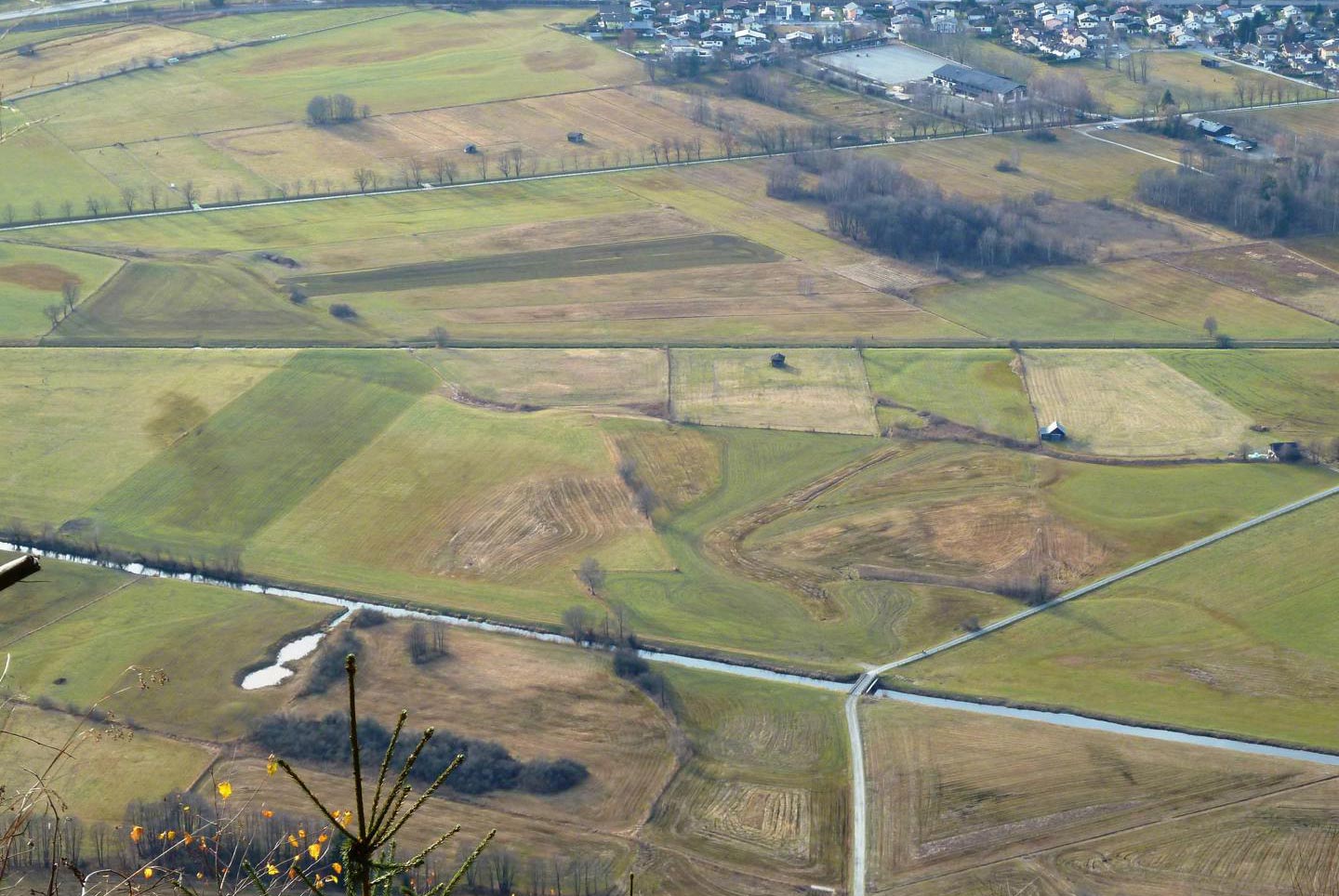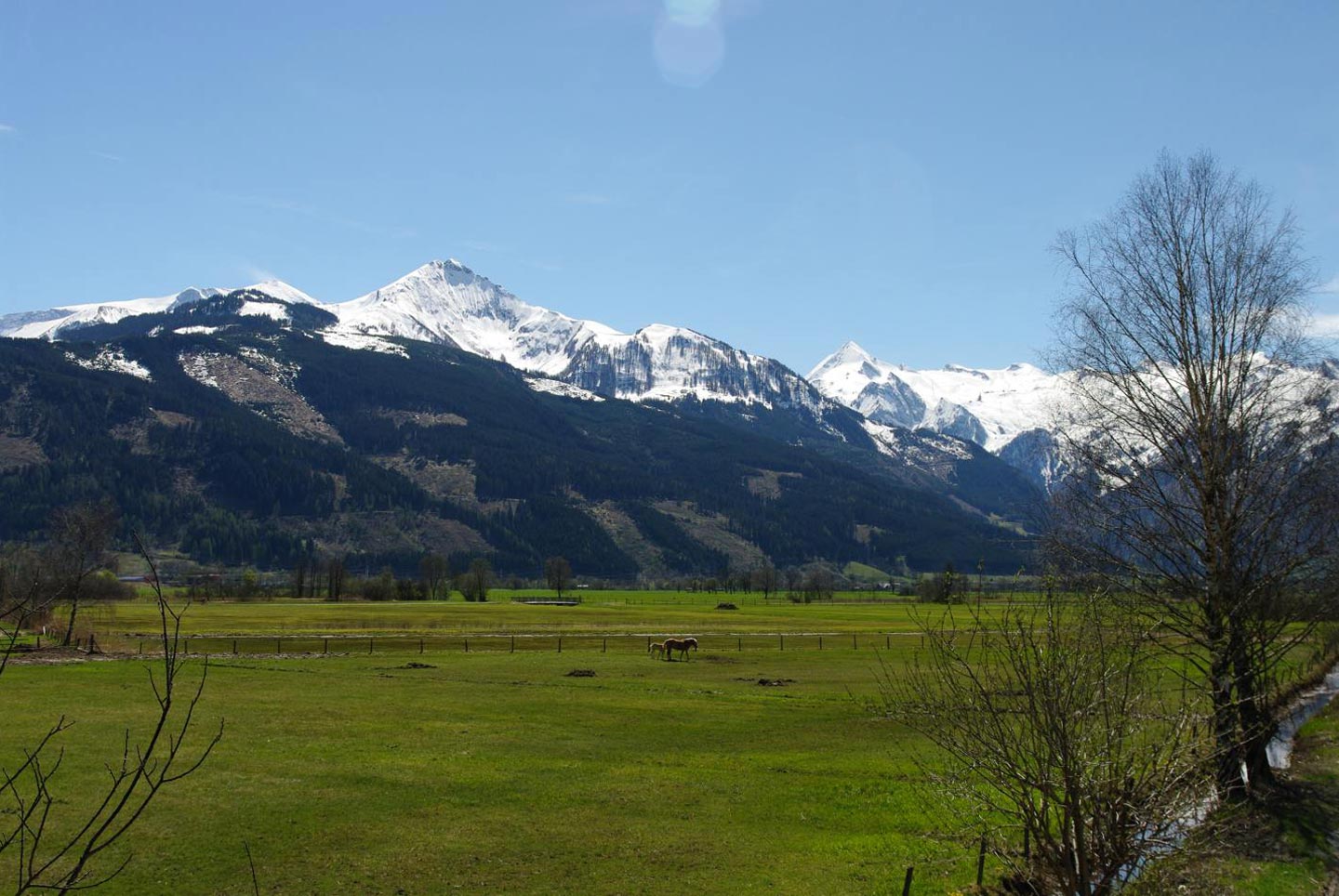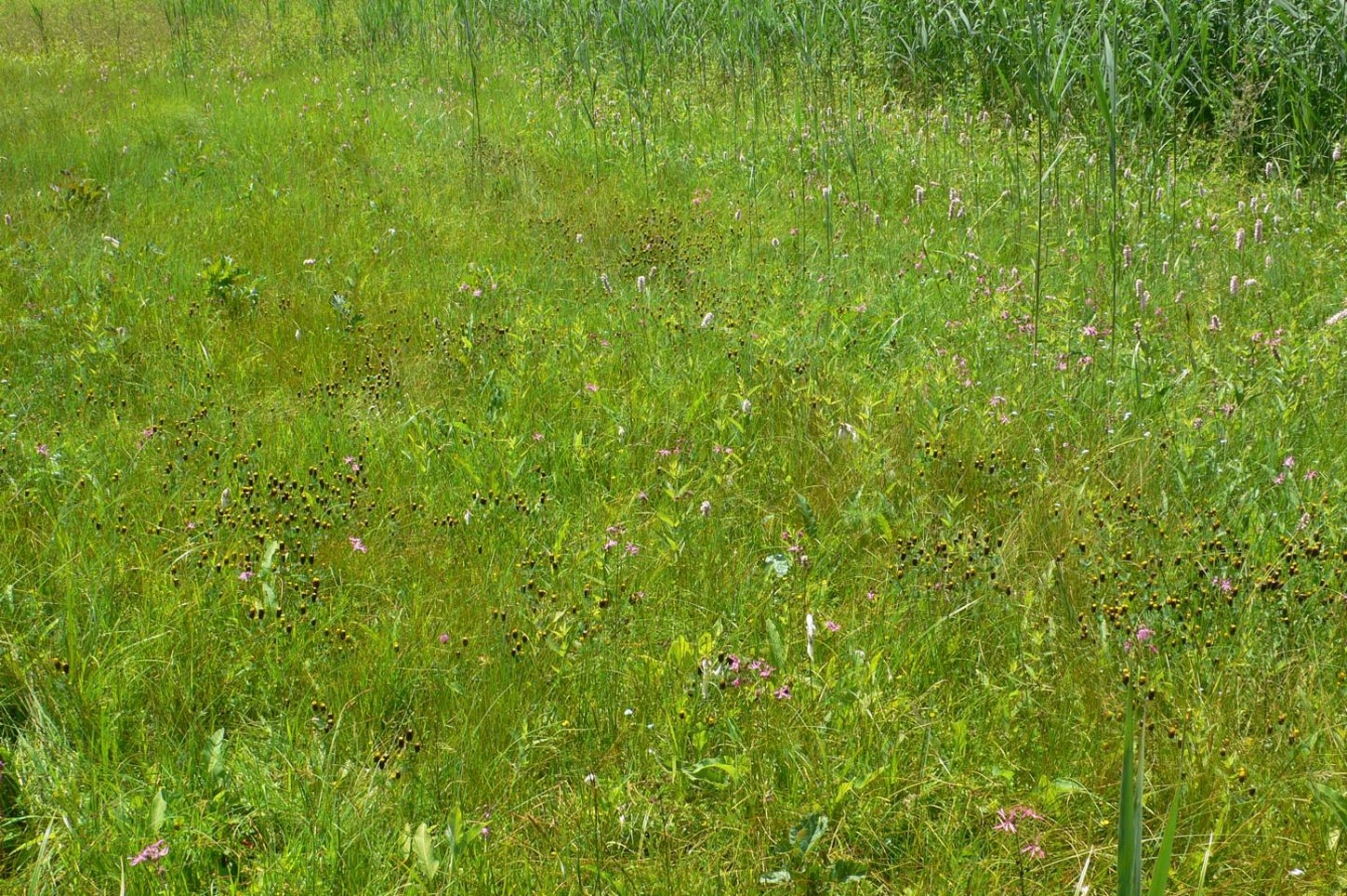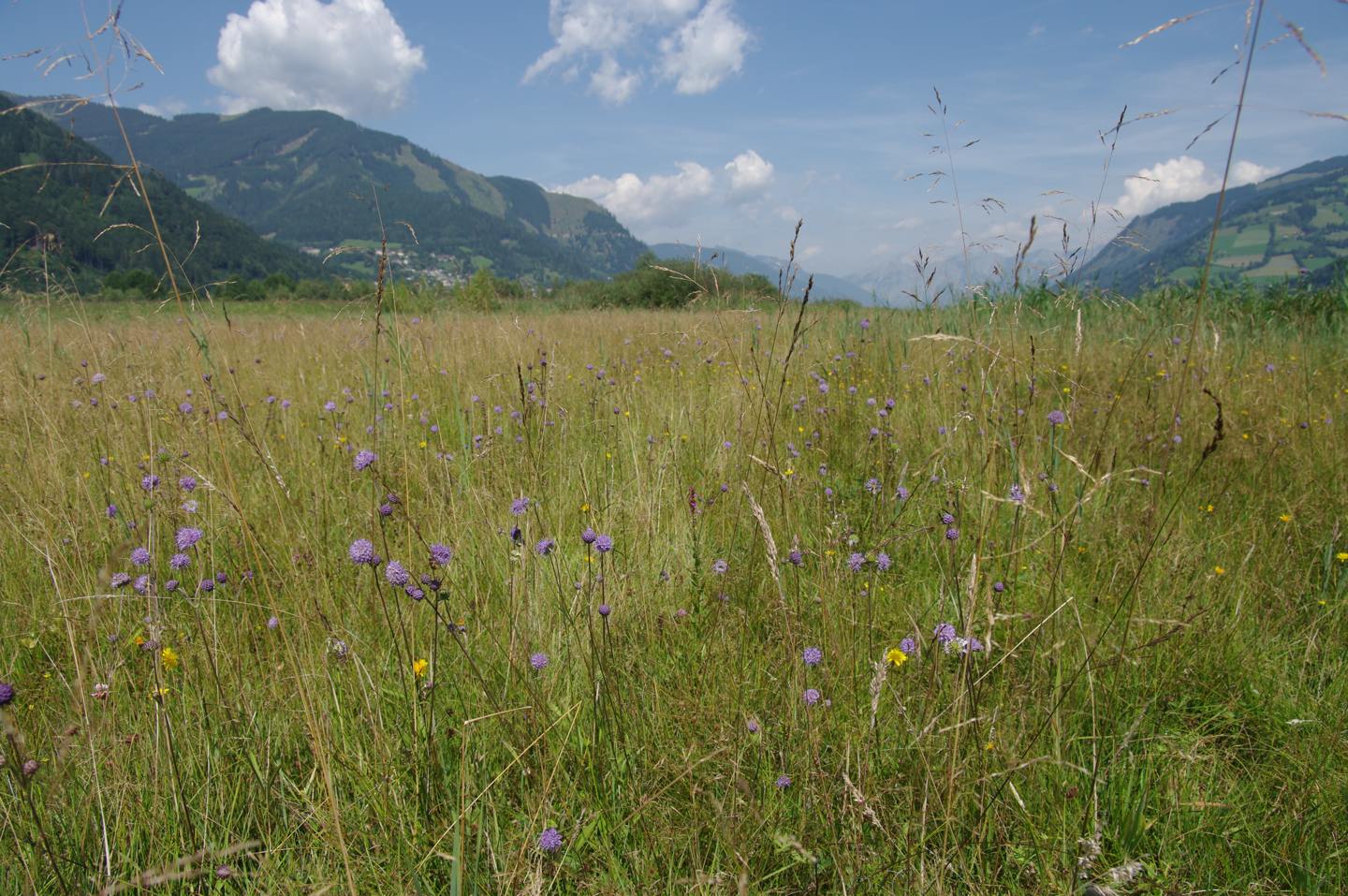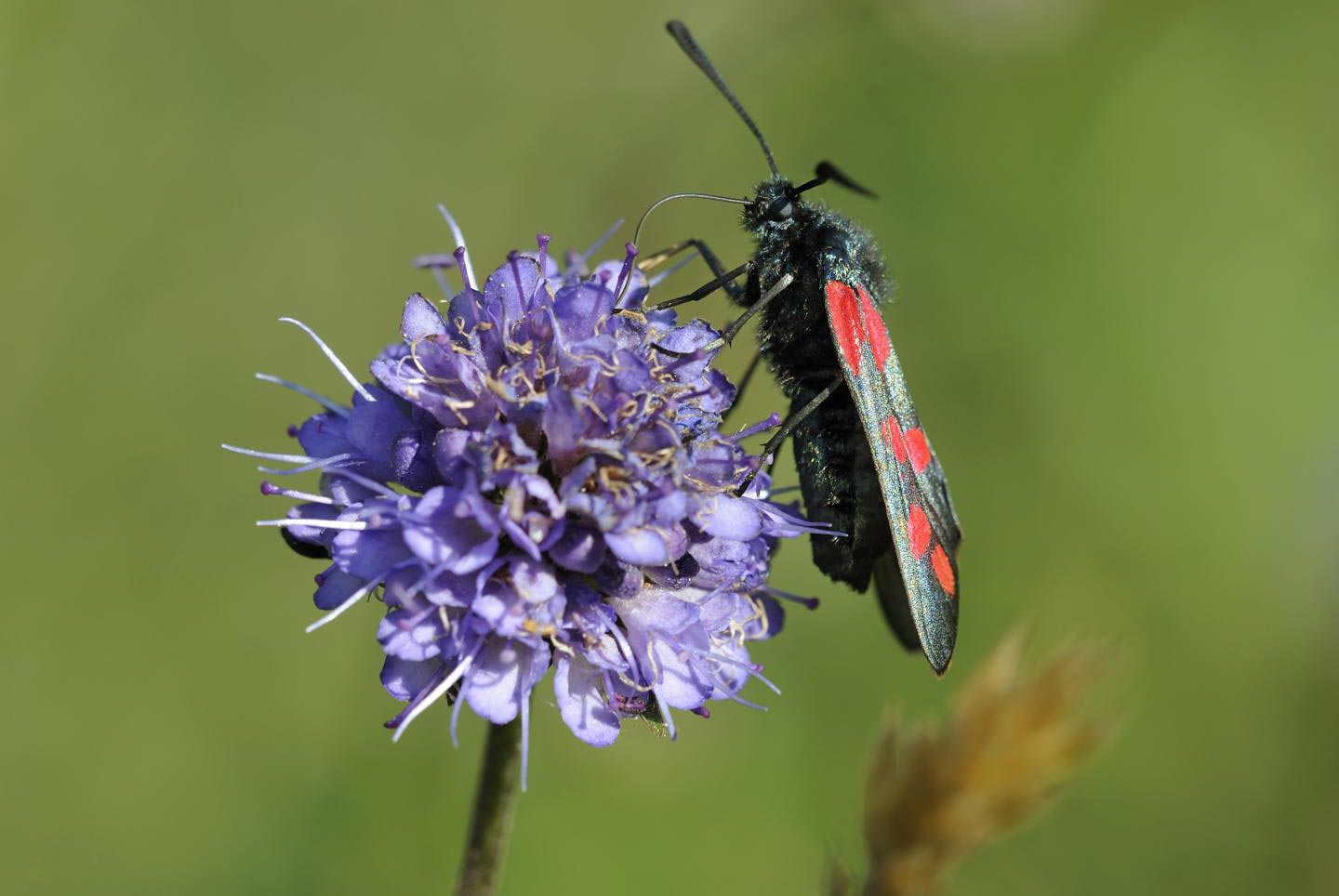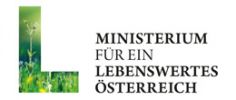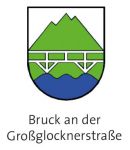a special „Wiesenreich“
Litter meadows -
Extensive agricultural use created a landscape that is particularly rich in species - the litter meadow - a special "meadow realm" ("Wiesenreich").
For the citizenship of Zell am See the wet meadows and moorland of the Zeller Moos were the only areas where they could get straw for their stables. As a result of this traditional use, the litter meadows emerged. They were not fertilized and mowed only once a year in autumn. So they are still particularly rich in wild flowers and insects.
Grazing in spring and late mowing
Noriker horses and Pinzgau cattle graze the wet meadows in spring. Their footprints are ideal germ places for rare plants such as the inconspicuous Needle Spikerush Eleocharis acicularis, which is highly endangered in Salzburg.
If the meadows are mowed late in autumn, also plants with long development time such as the Devil's bit Scabious can bloom. The seeds of many plant species only mature with late mowing and contribute to the natural regeneration. Ground breeding birds on the other hand have time to raise their young.
Precious Landscape
Litter meadows have become rare in our country. They are drained, fertilized and mowed several times, or their management and agricultural use has been abandoned, the meadows overgrown with bushes.
Both the repeated mowing and the utter abandonment bring many plant species and grassland birds to disappear. Only a moderate, extensive agricultural use and a high groundwater level ensure the preservation of typical flora and fauna of the wetland meadows.



